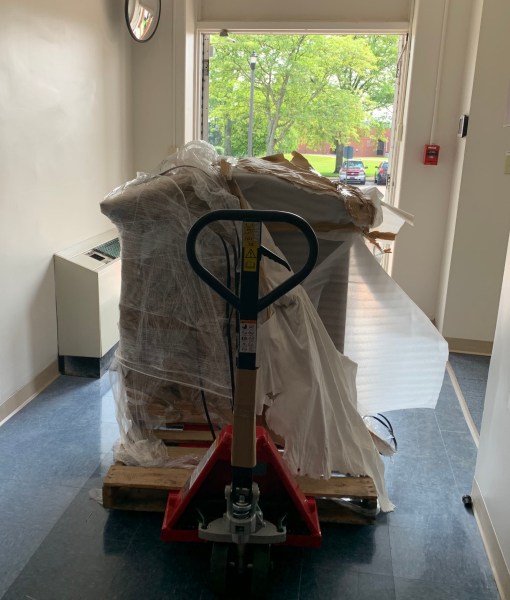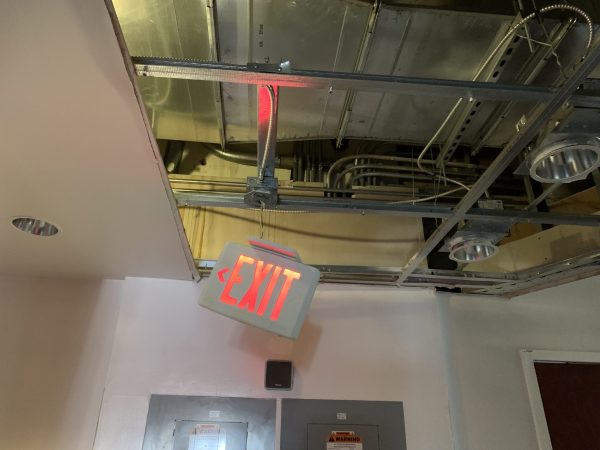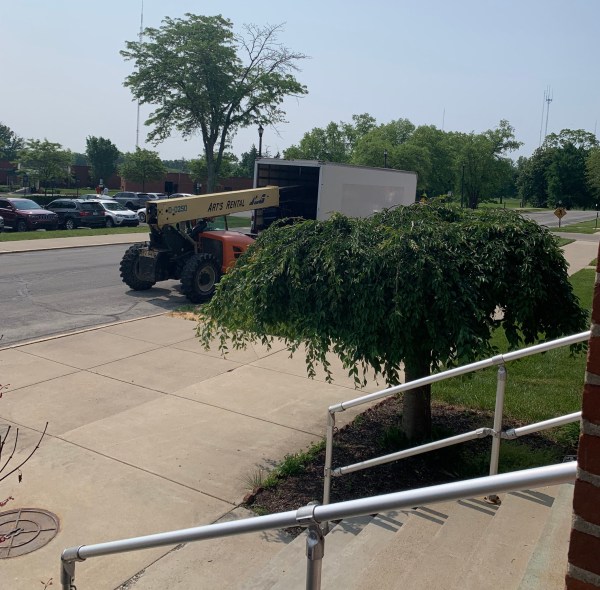A flood hits the VA’s history collection
Picture it: Dayton, Ohio, two days after Christmas 2022. During that week, the temperature hovered between -9 and 10 above. I’m just back from the barn, ensuring the horses are well blanketed and the heated water buckets are doing their job. Despite being on leave, my work phone was on the table, and I just had to sneak a peek. The iMessage banner doesn’t bother me, figuring that it’s a happy holidays text. Not exactly, it’s Dayton VA Medical Center’s (VAMC) Chief Engineer who is a long-time History Center supporter. “Can you please call me?”
This is not a regular ask, so I called her immediately. It went to voicemail, but she called me back straight away, and I could tell she’d been running. She and I have a well-established pattern of talking about our dogs first (shoutout to Paco!) and then getting on to the day’s business. That didn’t happen this time; her words made my blood colder than the barn had been. “A pipe burst in 401.” I ignored the fact I was in cold weather bibs, had hay in random places, and was not terribly clean. I said, “I’m on my way.” She gave me a better picture of what had happened, and to be honest, the next several days were a bit of a blur for many of us, including Engineering, Logistics, Environmental Management, and Contracting.
The burst pipe was on the first floor, and the collections were on the third floor. (Yes, I could have led with that, but it wouldn’t have been nearly as good a journey to take you on!) However, the reception area, the conference room, the curator’s office, and one section of the receiving room were decimated. The elevator to the third floor is in the middle of this same space, as well. The result was that the entire area was unsafe for us or the collections, and we had to move everything to the third floor as the first floor was now a construction zone. To make matters more interesting, by December 30, it was up to 61 degrees, meaning mold was now a very valid strategic concern. We spent several months figuring out remediation, including how we were going to continue to work, the impact on everyone even remotely involved, the financial implications, and what the long-term picture was going to be.

After a great deal of time, effort, and energy from many people, we moved from Building 401 to Building 126 in May 2023. This building change was previously discussed with VAMC leadership, but the pipe burst increased our urgency to find a new home.
It was a challenging way to start 2023. As we just observed the first anniversary, we are grateful to have been invited to make our home on the Dayton VAMC campus. The building is safe, the collections are safe, and so are we. Furthermore, we can thrive. With that, it’s time to go to the barn.
Look for more on our move to building 126 in “We’re Moving on Up” in our next post.
By Robyn Rodgers
Senior Archivist, National VA History Center
Share this story
Related Stories
Curator Corner
It isn’t often that researchers who work with historic objects get to know the people who used those objects every day. Sometimes we get lucky and can link artifacts to certain facilities or buildings on a historic VA campus, but usually we must look for more hidden lines of evidence to figure out how an object fits into the history of those who care for our Nation’s Veterans. As nice as it would be, it isn’t as if many artifacts turn up labeled with their owners’ names! So, imagine my surprise when my teammates and I began sweeping Putnam Library for any historic objects left behind before the building is closed for renovation, and found just that.
As far as artifacts go, its story seemed simple: book presses like these would have been used to help maintain and repair the thousands of books read in Putnam Library ever since it first opened in 1879. The day that I first got up close and personal with the press, I noticed a woman’s name scraped into the black paint of the platen (the technical name for the big metal plate used to hold books together). It said “Helen Carson” in big, legible letters. As we carefully transported the heavy press down the many stairs inside Putnam Library, I looked at the name and thought “Hm…wonder who that is?”.
Curator Corner
Mary Lowell Putnam is tied to VA history by her generous donation of a large volume of books to the Central Branch of the National Home for Disabled Volunteer Soldiers. These books, meant to honor her son who died in the Civil War, helped foster reading advancement for the Veterans who lived there after the war and into the 20th Century. However, her life was more than just a moment in time donating books. It included a life-long study of languages and a very sharp opinion that she shared in writing throughout her life.
Curator Corner
Presidents George Washington and Abraham Lincoln are among the most easily recognizable figures in American history. Their faces are symbols of wisdom, strength, and leadership. Even today, polls consistently rank them as the greatest or most successful presidents. With that in mind, it is unsurprising that the appreciation of these legendary statesmen has deep historic roots. In honor of their birthdays, our team at the National VA History Center explored those roots through this pair of plaster busts.









